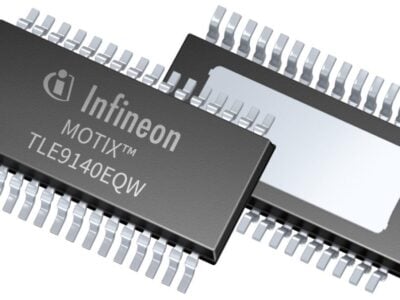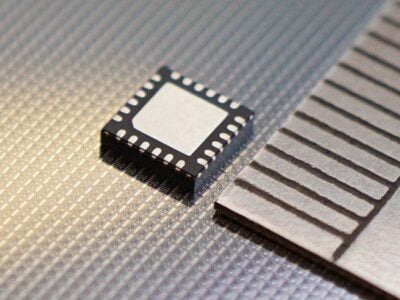
Bluetooth 5 SoC targets cost sensitive, mass-market wireless devices
The full production volume launch of the nRF52810 SoC is accompanied by the introduction of Nordic’s S112 SoftDevice (Nordic’s latest RF Bluetooth 5 (Bluetooth LE) protocol software or ‘stack’), and a new version of Nordic’s nRF5 Software Development Kit (SDK), a production-ready development tool with full peripheral driver support for the nRF52810 SoC.
The nRF52810 SoC has the lowest power consumption in the nRF52 Series and brings the 2 Mbps higher throughput, improved coexistence, and increased broadcast capacity with advertising extensions benefits of Bluetooth 5 to the most cost-sensitive, high-volume applications.
The nRF52810 SoC retains the 64 MHz, 32-bit ARM Cortex M4 MCU of other nRF52 Series SoCs maintaining the performance demanded when employing functionality such as LE secure connections and 2 Mbps data processing. In addition, the nRF52810 SoC’s Flash-based software architecture brings over-the-air (OTA) application upgrades to products previously excluded by cost constraints.
Example target applications include network-connected sensors and beacon building blocks for the IoT, low-cost wearables, low-cost wireless mice and keyboards for computers and tablets, toys, disposable medical monitoring devices, and connectivity controllers as companions to much larger MCUs.
The S112 SoftDevice is an extensively-tested, optimized, lightweight stack designed to complement the nRF52810 SoC’s 196kB Flash/24kB RAM allocation. The S112 SoftDevice occupies just 100kB, ensuring ample spare memory for a wide range of mass-market Bluetooth LE applications and robust support for OTA application software upgrades.
To optimize the performance of the nRF52810 SoC, the S112 SoftDevice is a dual peripheral/broadcaster only stack but retains the Bluetooth 5/Bluetooth LE features of: 2 Mbps throughput; Privacy 1.2; LE secure connections; LE Ping; Long ATT MTU; Timeslot API enabling use with Bluetooth mesh or other proprietary protocols; and PA/LNA control function.
The key advantages of Bluetooth 5 compared with previous versions of the standard include: 2x the on-air data bandwidth (2 Mbps) compared with the Bluetooth LE implementation of Bluetooth 4.2; and 8x the broadcasting ability with advertising extensions that increase the advertising packet payload size to 251 bytes for more efficient data transfer, particularly in beacon applications.
 If you enjoyed this article, you will like the following ones: don't miss them by subscribing to :
eeNews on Google News
If you enjoyed this article, you will like the following ones: don't miss them by subscribing to :
eeNews on Google News




